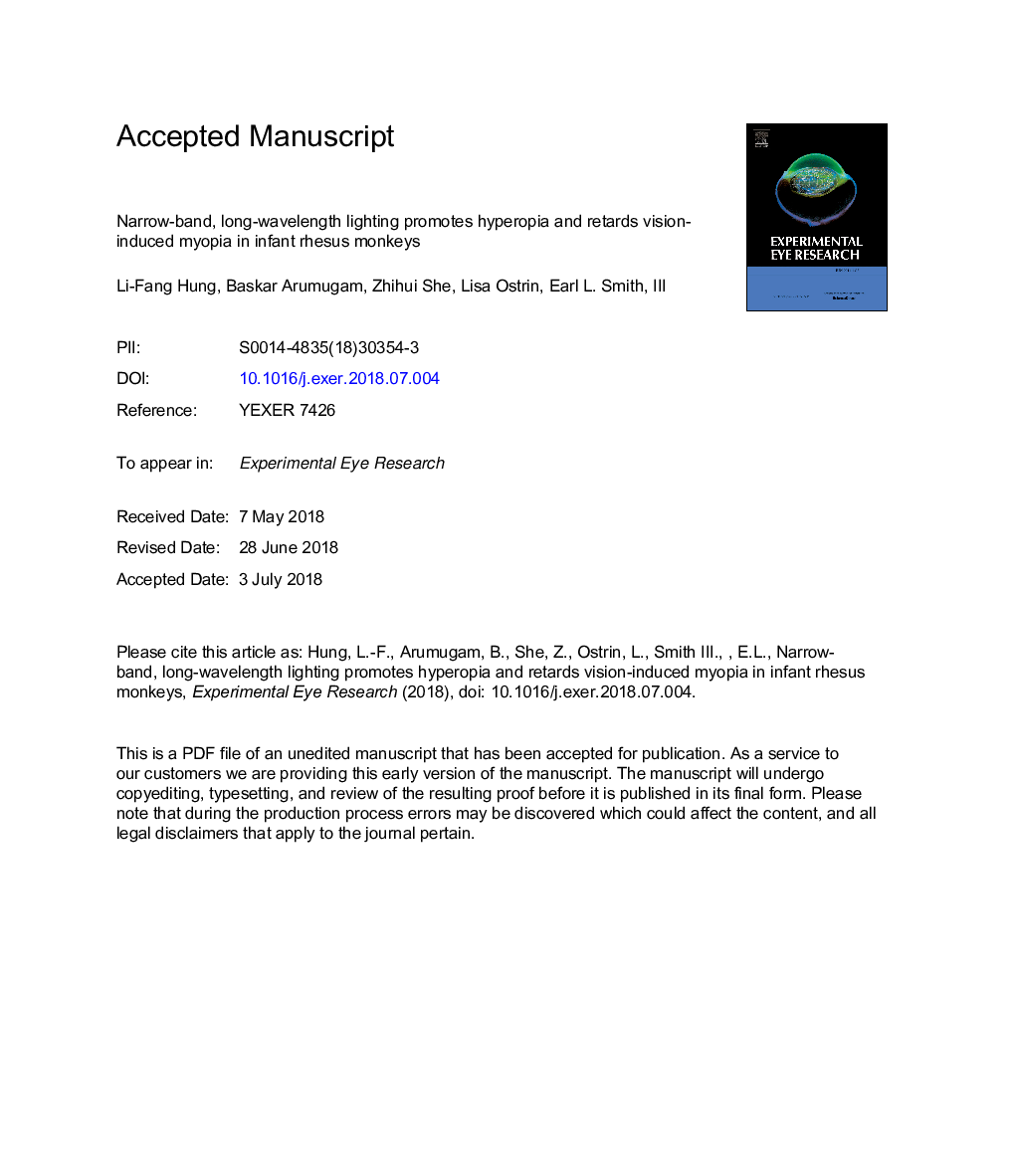| کد مقاله | کد نشریه | سال انتشار | مقاله انگلیسی | نسخه تمام متن |
|---|---|---|---|---|
| 8791884 | 1602546 | 2018 | 62 صفحه PDF | دانلود رایگان |
عنوان انگلیسی مقاله ISI
Narrow-band, long-wavelength lighting promotes hyperopia and retards vision-induced myopia in infant rhesus monkeys
ترجمه فارسی عنوان
نور باند باریک، نور طولانی مدت موجب برانگیختن دوربینی می شود و بینایی نزدیک ناشی از بینایی را در میمون های پرورش نوزادان کاهش می دهد
دانلود مقاله + سفارش ترجمه
دانلود مقاله ISI انگلیسی
رایگان برای ایرانیان
کلمات کلیدی
موضوعات مرتبط
علوم زیستی و بیوفناوری
ایمنی شناسی و میکروب شناسی
ایمونولوژی و میکروب شناسی (عمومی)
چکیده انگلیسی
The purpose of this investigation was to determine the effects of narrow band, long-wavelength lighting on normal refractive development and the phenomena of lens compensation and form-deprivation myopia (FDM) in infant rhesus monkeys. Starting at 24 and continuing until 151 days of age, 27 infant rhesus monkeys were reared under long-wavelength LED lighting (630 nm; illuminance = 274 ± 64 lux) with unrestricted vision (Red Light (RL) controls, n = 7) or a +3 D (+3D-RL, n = 7), â3 D (â3D-RL, n = 6) or diffuser lens (From Deprivation (FD-RL), n = 7) in front of one eye and a plano lens in front of the fellow eye. Refractive development, corneal power, and vitreous chamber depth were measured by retinoscopy, keratometry, and ultrasonography, respectively. Comparison data were obtained from normal monkeys (Normal Light (NL) controls, n = 39) and lens- (+3D-NL, n = 9; â3D-NL, n = 18) and diffuser-reared controls (FD-NL, n = 16) housed under white fluorescent lighting. At the end of the treatment period, median refractive errors for both eyes of all RL groups were significantly more hyperopic than that for NL groups (P = 0.0001 to 0.016). In contrast to fluorescent lighting, red ambient lighting greatly reduced the likelihood that infant monkeys would develop either FDM or compensating myopia in response to imposed hyperopic defocus. However, as in the +3D-NL monkeys, the treated eyes of the +3D-RL monkeys exhibited relative hyperopic shifts resulting in significant anisometropias that compensated for the monocular lens-imposed defocus (Pâ¯=â¯0.001). The red-light-induced alterations in refractive development were associated with reduced vitreous chamber elongation and increases in choroidal thickness. The results suggest that chromatic cues play a role in vision-dependent emmetropization in primates. Narrow-band, long-wavelength lighting prevents the axial elongation typically produced by either form deprivation or hyperopic defocus, possibly by creating direction signals normally associated with myopic defocus.
ناشر
Database: Elsevier - ScienceDirect (ساینس دایرکت)
Journal: Experimental Eye Research - Volume 176, November 2018, Pages 147-160
Journal: Experimental Eye Research - Volume 176, November 2018, Pages 147-160
نویسندگان
Li-Fang Hung, Baskar Arumugam, Zhihui She, Lisa Ostrin, Earl L. III,
